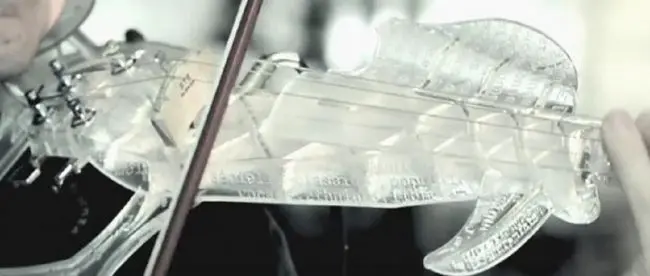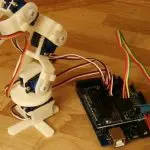3D printing a violin
A TRADITIONAL INSTRUMENT MEETS THE LATEST TECHNOLGY – WITH AMAZING RESULTS
There’s almost no limit to what you can create with a 3D printer, and the technology opens up new ways of creating familiar objects. This has obvious attractions for designers and engineers, but artists and musicians are starting to embrace it too. You might wonder what musicians are printing, and the answer is surprising – instruments.
The shape of a traditional instrument is limited by the materials it’s made of, but with modern electric models there’s a bit more flexibility. Add this to the unique capabilities of a 3D printer and it’s possible to create some very striking designs. French violinist Laurent Bernadac is one artiste who’s taken advantage of the combination to create a unique and impressive electric 3D printed violin.
Blending tradition and technology
Bernadac’s first priority was an instrument that would sound amazing, which meant it had to replicate the acoustics of a traditional violin. As the material was going to be very different, however, that meant it was a lot more complicated than scanning a violin and reproducing the shape. In the end he came up with a compact design that was inspired by a classic violin – in this case the famous Stradivarius design – but also exploited the printer technology to the full. Among other things the body of the instrument was made in a single piece. A normal violin body has to be assembled from several pieces of wood and they have to be fitted together very precisely. Any gaps along the joints will ruin the sound, and it’s the skill needed to eliminate them that makes good violins so expensive. With a printed one that isn’t a problem, so this style is potentially very affordable.
The first prototype was printed in polycarbonate, but it turned out to be too heavy. Another advantage of the printed violin is that it can be much lighter than a wooden one, which gives the musician more freedom to move as he or she plays, but that depends on the selected material. For the final version he opted for stereolithography, printing the 3D printed violin in resin. It took 24 hours to create the instrument, using an SLA-3500 printer. Once the distinctively shaped body was printed its surface was finished with fine sandpaper and polished, then the strings and electric pickup were installed.
One of a kind – so far
An antique violin might have inspired the shape of this instrument, which Bernadac calls the 3dvarius (or sometimes “Pauline”) but it has a distinctive appearance of its own. For a start it’s printed in transparent resin. The properties of the resin also meant that it could be given some unusually ergonomic features, including an integrated shoulder rest that makes it much more comfortable than a normal instrument.
Bernadac hopes that other violinists will be interested enough that he can start selling the instruments commercially, but in the meantime he’s using the first one himself. Its unique appearance and sound can be seen in YouTube videos like this U2 cover. Even if you’re not a classical music fan it’s a fascinating instrument, and a perfect illustration of how 3D printing can change the way we make things.








Leave a comment
You must be logged in to post a comment.